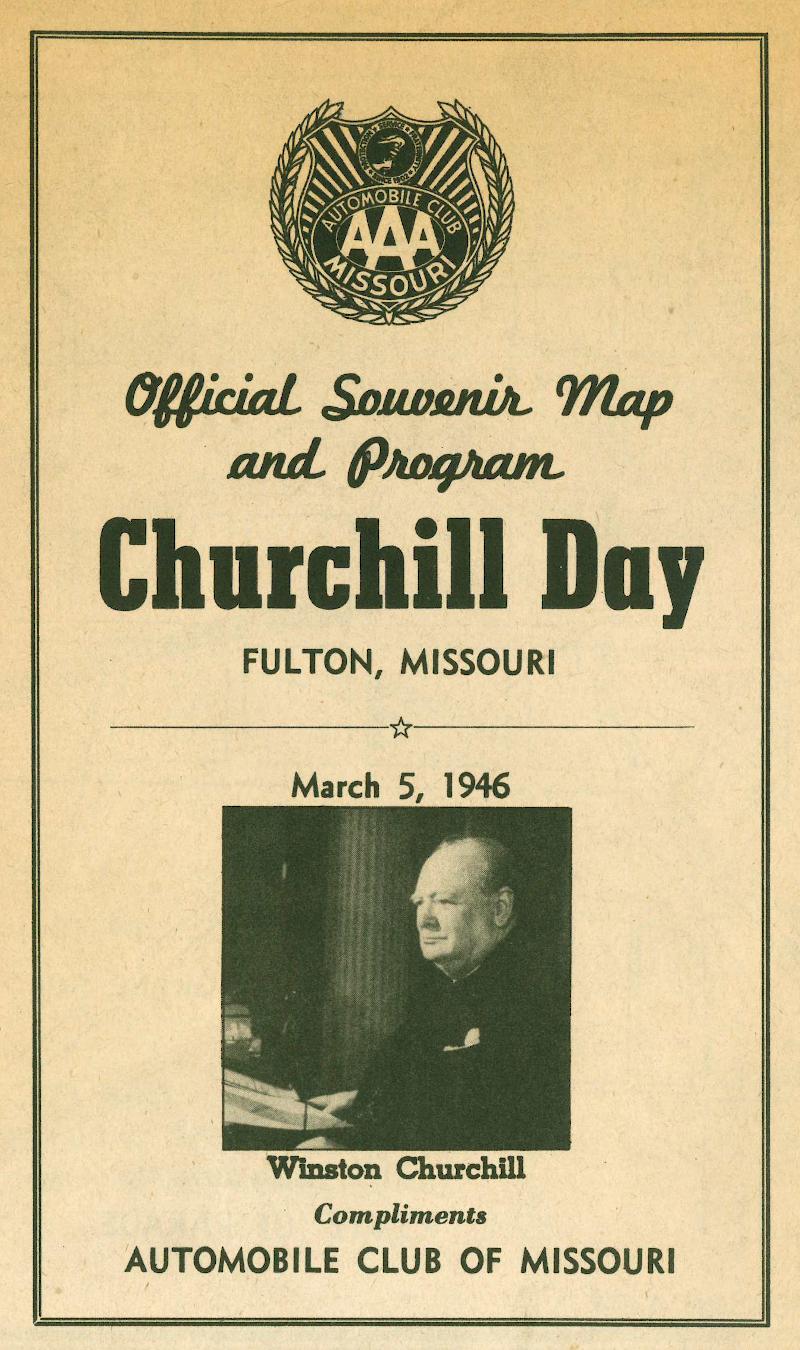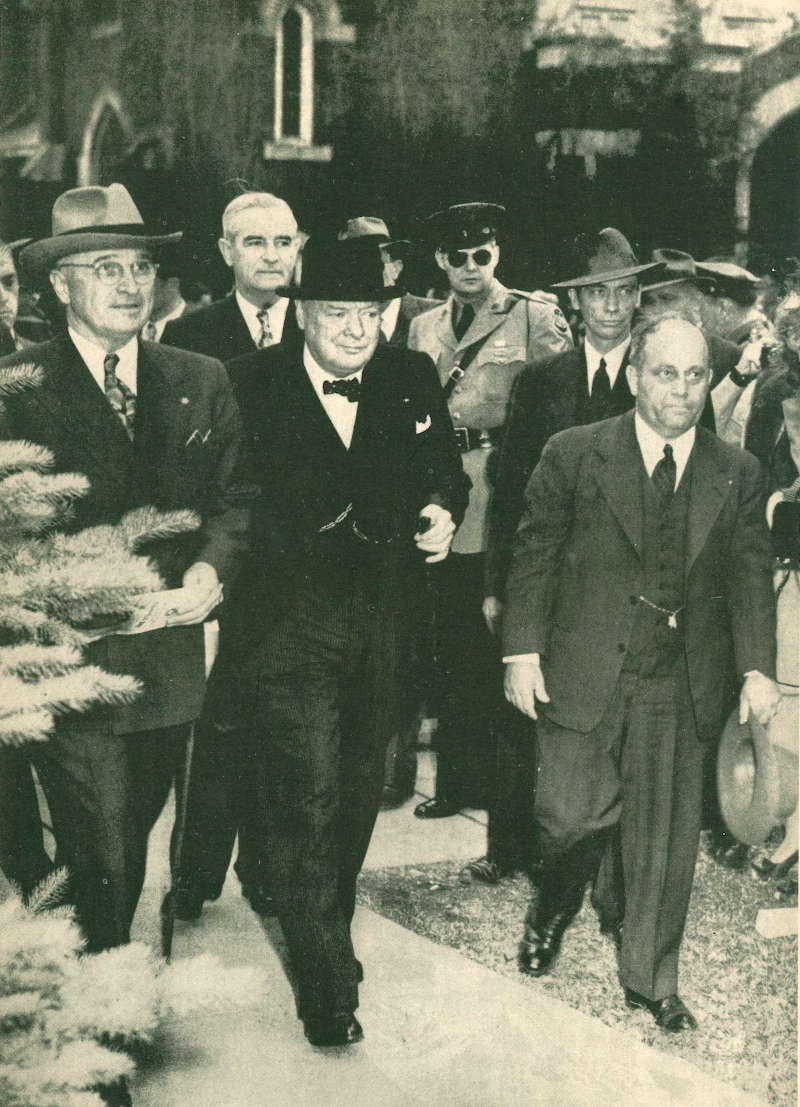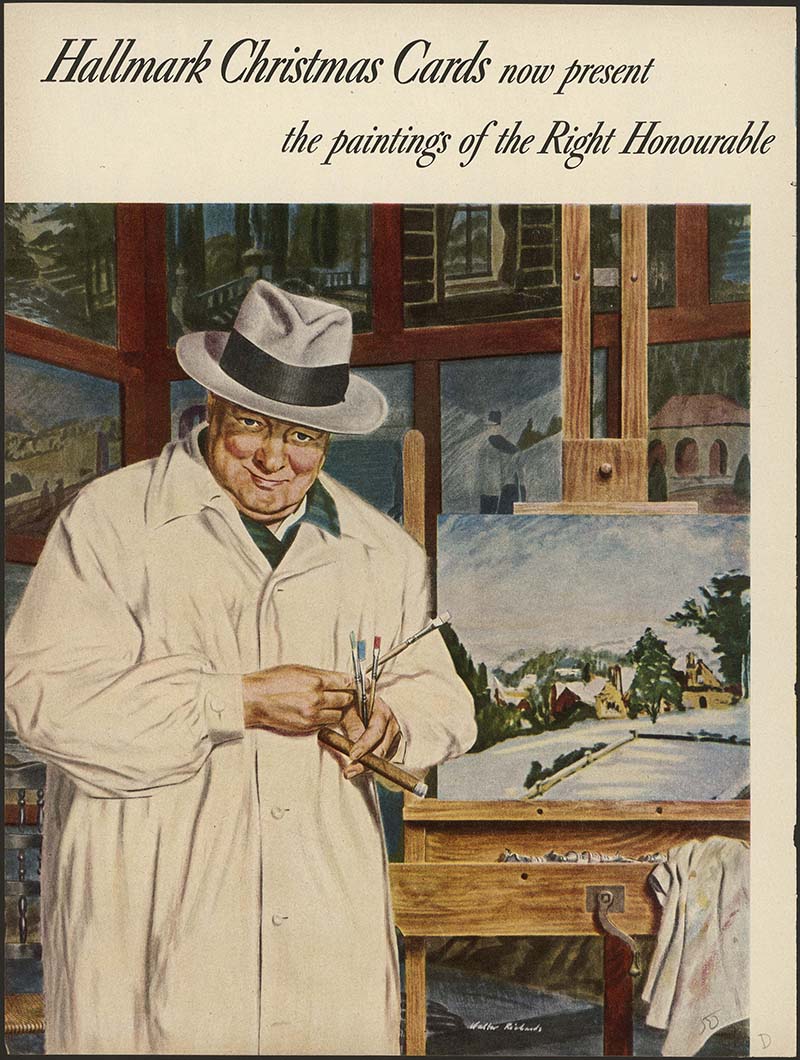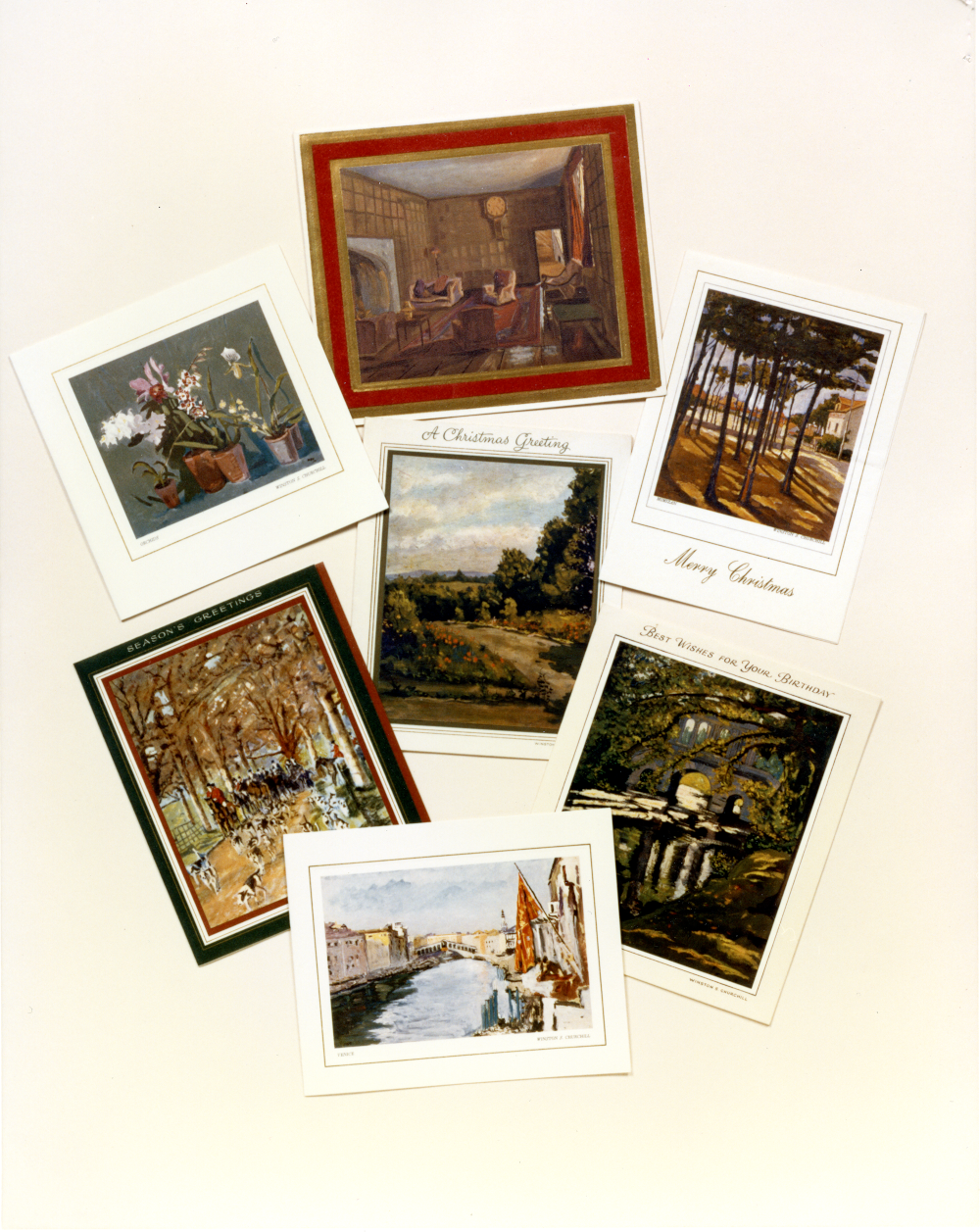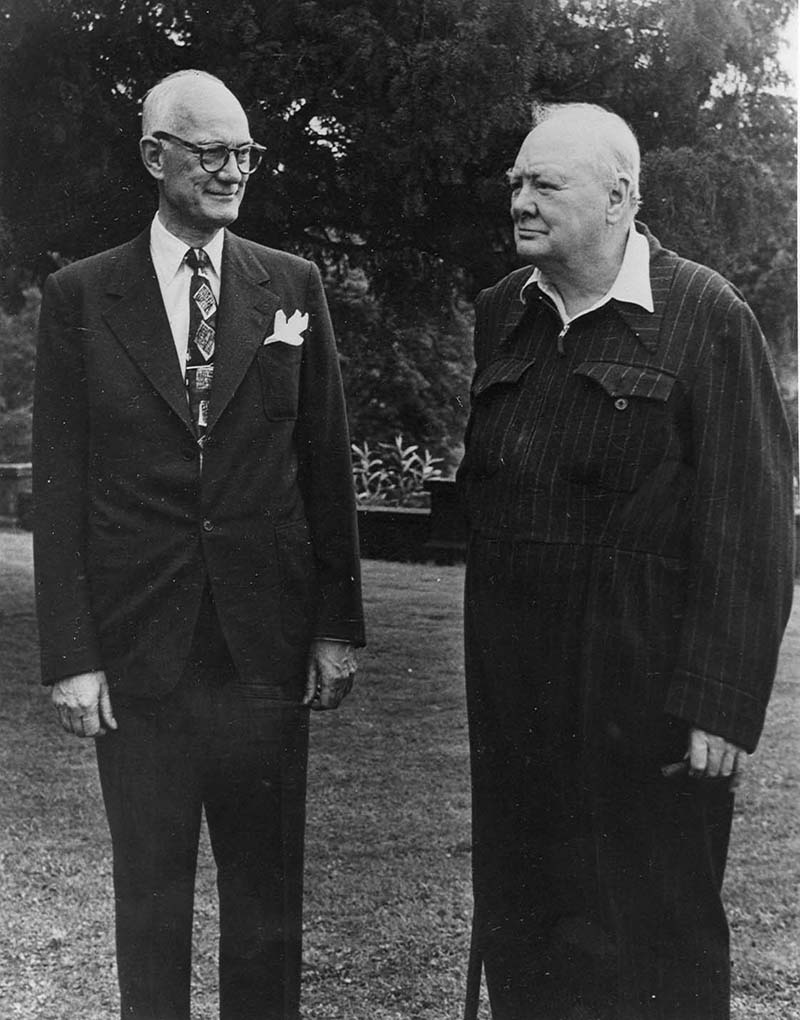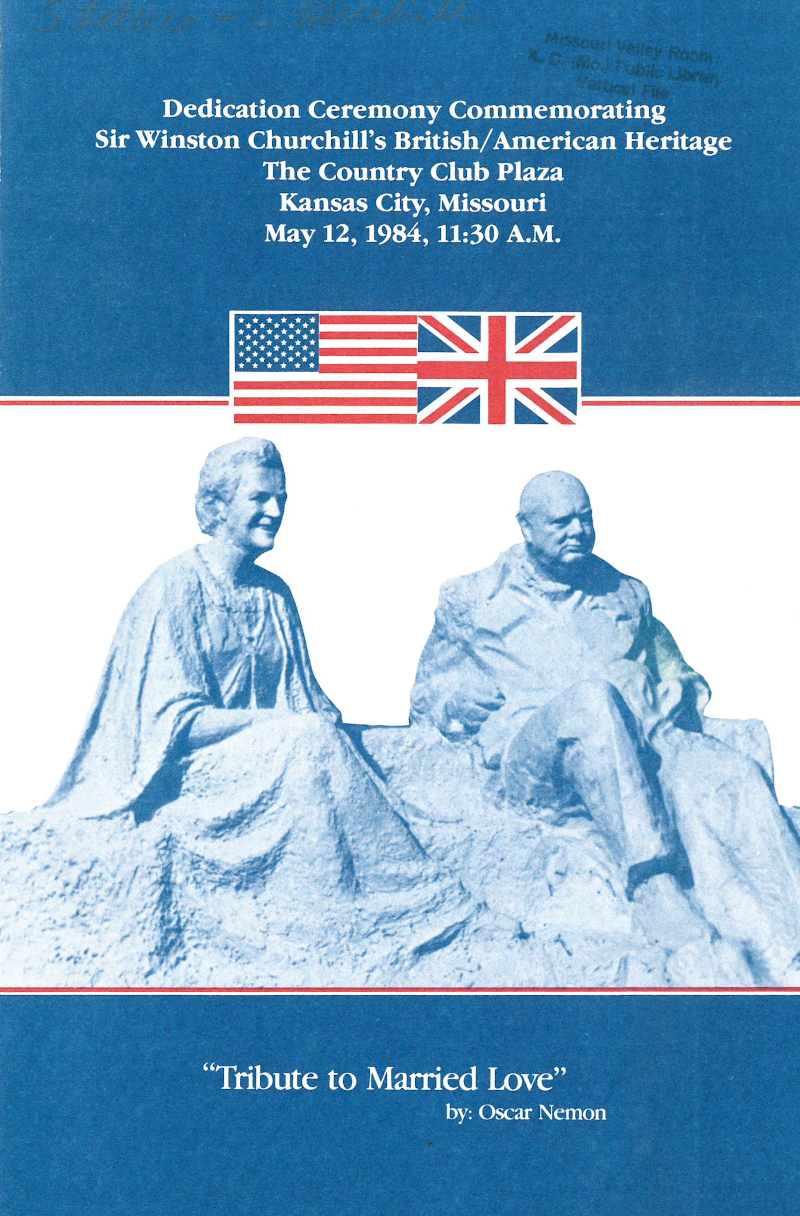All Locations will open late Thursday, October 28, at 10:30 a.m. for an all staff meeting.
What’s your KC Q is a joint project of the Kansas City Public Library and The Kansas City Star. Readers submit questions, the public votes on which questions to answer, and our team of librarians and reporters dig deep to uncover the answers.
Have a question you want to ask? Submit it now »
By Joanna Marsh, Missouri Valley Special Collections
Walk past the small courtyard at the corner of Wornall Road and Ward Parkway, and you can’t miss them. The bronze likenesses of Winston Churchill and his beloved wife Clementine have shared a seat there for more than 36 years.
Not far across Brush Creek, the 12-story condominium building that bears Churchill’s name stands in the heart of the Country Club Plaza.
But what did the British statesman have to do with the Paris of the Plains?
This week’s edition of "What’s Your KC Q?" explores the former prime minister’s local ties, thanks to reader Nicole Beckley who asks, “What’s the history of the Churchill-Kansas City connection?”
The story begins 150 miles east of Kansas City at Westminster College in Fulton, Missouri. There, Churchill delivered his famous “Iron Curtain” speech on March 5, 1946 after accepting an invitation endorsed by President Harry S. Truman. “This is a wonderful school in my home state,” Truman wrote in a postscript to the letter. “Hope you can do it. If you come, I will introduce you.”
Thousands of people flocked to Fulton to catch a glimpse of Truman and Churchill and hear the lecture in Westminster’s gymnasium. Churchill’s speech, originally titled “Sinews of Peace,” warned of the increasing Soviet control in Europe that would later give rise to the Cold War. In lieu of payment, the school’s board of trustees gifted Churchill a painting by Kansas City artist Thomas Hart Benton. It would not be the last time that Churchill, painting, and Kansas City would be mentioned in the same breath.
In the audience that day was Joyce C. Hall, the founder of Kansas City’s Hallmark Cards, Inc., who met Churchill during the reception. Knowing Churchill to be a keen hobby painter, Hall later proposed the idea of reproducing his artwork on a series of Hallmark Christmas cards. Churchill happily agreed to the partnership – despite having a humble view of his artistic skill – and signed a three-year contract granting Hallmark sole reproduction rights to his artwork. Eight of his oil paintings, mostly colorful landscapes, were shipped to Kansas City to be photographed and considered for the first card collection. While the partnership promised to be lucrative, Hall also genuinely admired Churchill’s work.
"Mr. Churchill is much more than an amateur artist," Hall told The Kansas City Times, "Even without the Churchill name, the paintings would be acceptable in any gallery. The American public will discover very quickly that Mr. Churchill has tremendous abilities other than statesmanship."
The first collection of Churchill Christmas cards was released in the winter of 1950 and was a huge success. Hallmark reported 4.5 million pre-orders from stores eager to sell to customers. More projects followed over the next two years, including additional cards and calendars, and in 1957, Hall sponsored Churchill’s first major exhibition, "Winston Churchill, The Painter." Hesitant to show his work, Churchill was persuaded to do the exhibit by another famous hobby painter, Dwight D. Eisenhower. The show debuted at the Nelson Gallery of Art on January 22, 1958, and later traveled throughout the country.
Over the years, the partnership between Hall and Churchill grew into a close personal friendship, complete with overseas visits between their families. As a token of appreciation, Churchill gifted his painting ”Frankfurt Beach, Jamaica” to Hall, who later purchased more of his friend’s artwork. Five of Churchill’s paintings remain part of the Hallmark Art Collection.
Hall also selected Churchill’s daughter, actress Sarah Churchill, as an early host of what would become the Hallmark Hall of Fame television program. In 1964, the show recounted the former prime minister’s artistic life in "The Other World of Winston Churchill."
In addition to the Hallmark partnership, Churchill supported Hall’s involvement in People to People International, a nonprofit organization founded by President Eisenhower in 1956. In 1961, the organization established its headquarters in Kansas City, with Hall serving as executive committee chairman and honorary president.
After Churchill’s death in 1965, The Kansas City Times reported that Eisenhower stopped by Kansas City to pick up Hall in a White House aircraft and the two journeyed to England to attend their friend’s funeral. People to People would later sponsor the Tribute to Churchill pavilion at the 1964-65 New York World’s Fair.
So where does the Plaza statue come in?
Commissioned by Jeanette and Miller Nichols in 1981, the $250,000 sculpture has a unique story of its own.
While overseeing construction of the new Wornall Road bridge at Ward Parkway, J.C. Nichols Co. President Miller Nichols sought to decorate the southwest corner with a new work of art. His dentist put him in touch with an acquaintance, British sculptor Oscar Nemon, who had created several Churchill works.
Recognizing Churchill’s connections to the area, Nemon determined that Kansas City would be the perfect place for a companion piece to his sculpture “Married Love,” which depicts Churchill with his wife Clementine. At roughly 6 feet by 12 feet, the Plaza statue is a larger version of the original that sat at Blenheim Palace in Woodstock, Oxfordshire, England, where Churchill was born and later proposed to Clementine. The two works on different continents would pay homage to Churchill’s British and American heritage—his mother Jennie was from New York.
To help pay for the sculpture, the Nichols garnered support from the English-Speaking Union, which arranged a theatrical production about Churchill’s life to spark interest. Held at the Folly Theater, "Churchill" starred Roy Dotrice and played for one evening on November 28, 1982. The benefit performance succeeded in raising the funds needed to complete and maintain the piece. Nemon’s sculpture was dedicated May 12, 1984, with Churchill’s granddaughter Edwina Sandys and the Duke of Marlborough in attendance.
Churchill’s name was also attached to the residential tower on West 48th Street. It was the statue, however, that became a recognizable feature of the Plaza, accompanied by two benches with ornate bronze armrests and a sound box with recordings of Churchill’s speeches.
Today, it remains a reminder of Churchill’s partnership with Hallmark, his 15-year friendship with J.C. Hall, and the remarkable day in Fulton that started it all.
Submit a Question
Do you want to ask a question for a future voting round? Kansas City Star reporters and Kansas City Public Library researchers will investigate the question and explain how we got the answer. Enter it below to get started.



